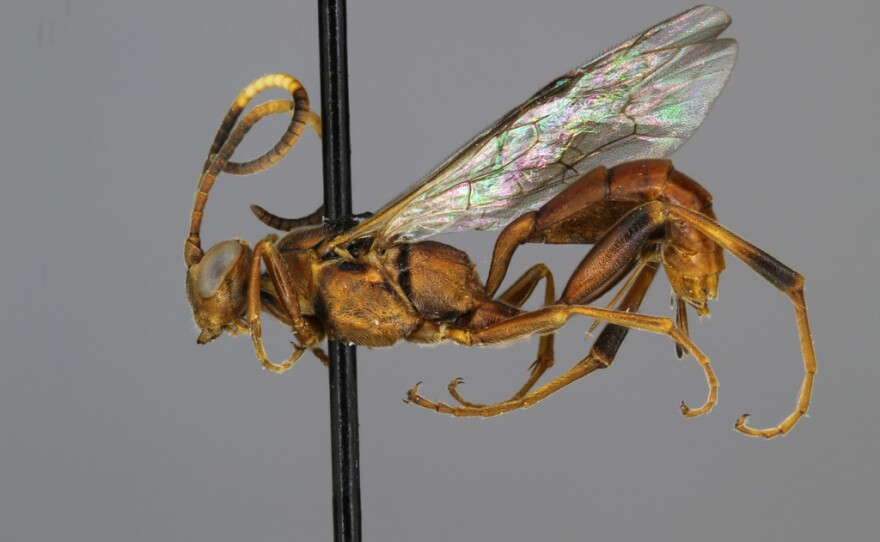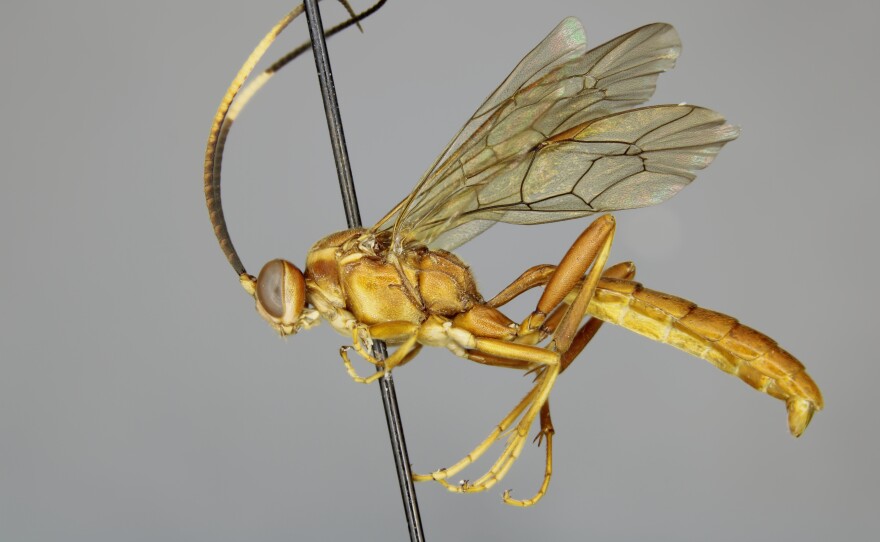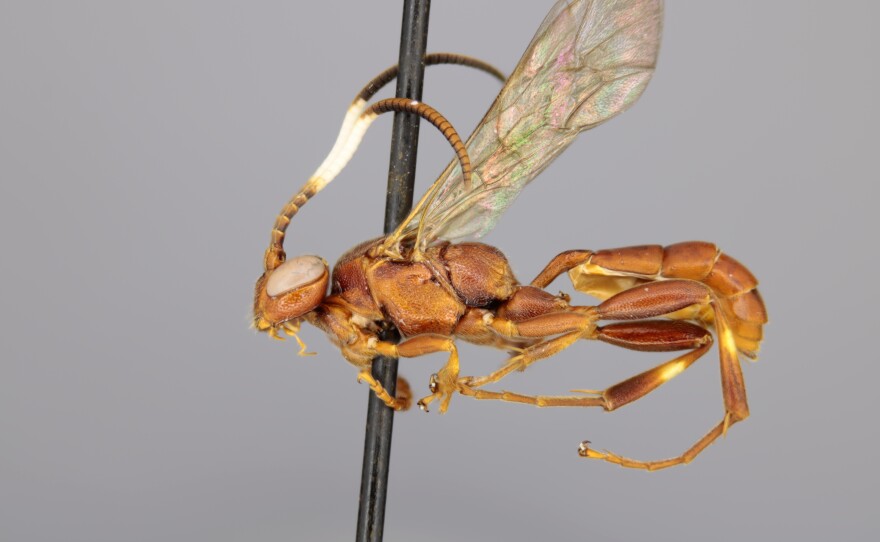“So the collection consists of around a million specimens of just these ichneumonid wasps. So just this one family of wasps. And in it there’s, it's really hard to say exact figures, but there's probably something like 10 to 20,000 undescribed species just sitting in the drawers waiting to be studied,” said Brandon Claridge, a recent PhD graduate, who studies ichneumonid wasp diversity and systematics. He has personally named over 25 species. Which, though impressive, is really a drop in the bucket.
“We're looking at, in Ichneumonidae alone, somewhere around 75,000 undescribed species total," he said. "And just to put that in perspective, there's around 70,000 known vertebrate species.”
That means there are more undescribed species, species not yet named, within a single family of wasps than all fish, reptiles, birds, and mammals combined. And that’s just one family of wasps. Some of the most maligned animals on our planet.
“Yeah, when most people hear wasp, they think of your typical black and white paper wasp that's flying around, maybe around their house. And they're sometimes aggressive. They might sting you," said Claridge. "They're usually thought of as problematic organisms to be around”
But those are often Vespids, social wasps, not the mostly solitary Ichneumonids. The two are completely different families and while the Vespids are known as predators, often killing or immobilizing prey to feed to their growing young, the Ichneumonids are parasitoids.
They lay eggs in or on an unsuspecting host, like the soft body of a caterpillar, or even the larvae of a fellow wasp. Those eggs then hatch and grow and develop inside their host’s body, consuming it alive and then emerging as an adult wasp, like the ones that Claridge studies.
“Alright, so what we're looking at is a female specimen of Ichneumon representing an undescribed species. And I collected this back in March, the single specimen from the Cadiz dunes in California. I just saw her crawling on the ground. I went there. I'm not expecting to find any of these Ichneumon, but boom, easy as that to discover a new one,” said Claridge.

Granted, it wouldn’t be that easy for just anyone to discover a new species on their own, but with lots of time and training it is possible for someone with well, less experience to help name new species.
“It's a really trivial thing to discover new species, all you need to do is go in the collection," said Claridge. "And if you're a taxonomist do some basic sorting work and identify those. But it's a whole different thing to actually spend the time and labor to describe their morphology and also their distribution.”
That’s because even for someone with Claridge’s skills and knowledge there’s a major difference between confirming a species is unknown and actually naming it.
“So the process of describing the species is, first you have to amass as many specimens from a certain region or a certain group of insects that you can, and go through and morphologically identify them,” said Claridge.
And that’s the part that he largely completed on his own time before I even joined him. Once he amassed the specimens, we spent hundreds of hours pouring over the preserved wasps, staring through microscopes, taking photos, pinpointing locations, describing morphologies, and finally writing up our paper.
In it, we named many of the new species after their physical features, such as the red and black and yellow Cratichneumon igniferous, whose species name is the Latin for “fire-bearer, ” or the “square headed” Cratichneumon tetragonops.
“It takes a whole lot of work. So at the most basic stage, it begins with something piquing your interest to actually make you work on this project. There’s a huge range of different projects I could have done," said Claridge. "What got me interested in this was receiving some really rich samples from a colleague down in Arizona.”
That’s because the species that we described all come from a series of isolated mountain ranges in southeastern Arizona and northern Mexico, known as the sky islands.
“I'm just fascinated by the biodiversity down there. It's a very unique area,” said Claridge.
And probably an area with many more insects to be discovered.
“This was a big step forward, but it does not represent the final chapter of the Cratichneumon of Arizona, even,” said Claridge. Because remember, there’s probably more unknown species of Ichneumonids than all vertebrates combined.
“And we described 11 of them." said Claridge. "Yeah, sadly, at our current rate of description it would take, you know, many hundreds of years to actually complete the inventory.”
This matters because we may be losing species before we even name them. But to do so requires a great deal more interest, time, and funding.


























